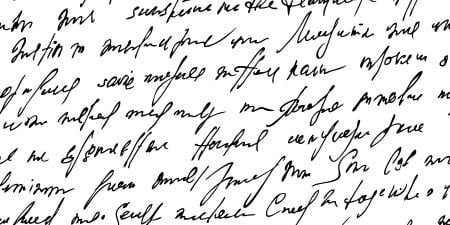It is now possible to extract a cell from a 6- to 10-cell embryo (technically, a blastocyst) that has been fertilized in vitro, test the cell’s DNA for any one of several thousand single-gene mutations, and then implant for gestation only those embryos that are free of the specified gene mutation. The procedure, called preimplantation genetic diagnosis (PGD), does not harm the embryo and enables those who wish to avoid having a child with a certain genetically transmitted disorder to do so without confronting the need for abortion.1 As pediatrician and bioethicist Jeffrey Botkin says, PDG’s specific advantage is that certain “couples will experience a relative psychological benefit through PGD by discarding embryos to achieve a healthy child, as compared with the abortion of an affected fetus.”2
There is a trade-off, however, for circumventing the natural cycle of conceiving, undergoing more traditional forms of prenatal testing, aborting an affected fetus if necessary, then waiting for another natural pregnancy to occur, and starting the testing process again. That trade-off is the high cost in dollars, physical discomfort, and emotional stress of hormone treatment followed by invasive ova retrieval, in vitro fertilization, testing, and implantation. The entire process is often carried out at least twice, and, where more than 1 condition is being tested for, up to 8 attempts have been recorded3. Because PGD presupposes in vitro fertilization (IVF), monetary cost for PGD begins where the cost of IVF ($11,000 and above per cycle) leaves off3. So, as Botkin summarizes the potential market for PGD, a couple must be strenuously opposed to both abortion and to raising a child with the condition PGD is employed to identify. And they must have the financial resources to realize their wishes4. Since Botkin's article in 1998, another indication for PGD has come on the scene: selecting a tissue-compatible sibling for a living child with a fatal disease with the intention of providing a bone marrow donor for the sick child. This particular intention or goal adds additional ethical complication to a practice that was not ethically neutral to start with.
Ethical Concerns of PGD
For all its expense and inconvenience, preimplantation genetic diagnosis does not escape the moral objections that many have to abortion. True, no fetus is destroyed, and the tested embryos are not harmed. Yet, embryos are created that the couple never intends to use, and chances are no one will "adopt" the unimplanted embryos that carry the unwanted mutation. Hence, those who think that human life, from fertilization forward, shares the moral status of living persons view PGD and abortion in the same light: both practices disregard or at least devalue the sanctity of life. The ethical position currently expressed in US judicial decisions and health policy confers progressively greater moral status on embryos, fetuses, and newborns along a continuum demarcated by developmental milestones such as appearance of the neural streak at about 14 days, development of the nervous system, fetal viability, and so on. Individuals who share this progressive view of moral status might suffer less from discarding embryos than from destroying a fetus.
Others object to PGD for the same range of ethical reasons that they oppose germline gene therapy and genetic engineering. Selective implantation prevents certain genotypes from coming into existence, thus threatening genetic diversity and discriminating against those with disabilities; it commodifies children, mocking the true meaning of parenting and jeopardizing the parent-child relationship; and it deprives people of the opportunity for personal and moral growth that can be realized from making the most of what "nature" bestowed upon them.
The first of these objections—curtailing genetic diversity—has been voiced by advocates for those with disabilities. Spokespersons from this camp argue that elaborate, expensive, and unnatural procedures for selecting embryos without serious genetic mutations conveys the message that people with disabilities are less highly valued than those without. The majority of bioethicists, while acknowledging that this claim of prejudicial devaluing has merit, contend that the possible psychological harm done to persons with disabilities does not justify restricting the reproductive freedom of couples who wish to reduce their risk of having a child with a disability.
The technique can, at present, be used to select embryos by sex and may, in the future, be able to allow selection for certain other non-health-related traits. These real and potential applications raise a host of ethical concerns beyond the possibly prejudicial avoidance of offspring with disabilities. Sex selection because of a sex-linked disorder is generally acceptable to those who accept PGD at all, but many oppose selecting sex for "family balancing" or because parents prefer to have a son rather than a daughter, or vice versa. Trait selection for talent, personality, or non-health-related physical attributes comes under greater ethical scrutiny, even though it is not technically possible at this time. The "chosen child" faces a determinism more forceful and rigid than genes, according to David King: parental determination that the child fulfill the intention or talent or skills it was selected to embody5. King also worries about "opening the human gene pool to the winds of social market forces," that is, the transient, culturally influenced concepts of the ideal or perfect person6.
PGD To Rescue Siblings
In recent and highly publicized applications, parents of children with fatal disorders have undergone IVF and PGD to select embryos that can provide bone marrow transplants for the sick child. This use of PGD has a less-exacting predecessor. In the 1980s, several families conceived offspring with the hope of having a child that could provide bone marrow for his or her sibling. In the famous Ayala case, the gamble paid off, and Marissa Eve Ayala rescued her older sister from leukemia. PGD improves the odds for success by ensuring that the implanted embryo is disease free and compatible. Some parents, in their endeavor to save a sick child, are willing to endure the repeated hormone injections, ova extractions, testing, and implantation that the procedure requires. But the parameters for producing a suitable embryo are twice as stringent as for those who seek a "merely" healthy child. The "sibling-saving" embryo must be, first, disease free and, second, histo-compatible. And, of course, a clock is running, ticking away the life of the sick child.
In the 2 cases recently written about for the New York Times by Lisa Belkin, each family had a child with Fanconi anemia, a recessive inherited disorder that causes bone marrow failure3. Together, the mothers underwent a total of 14 IVF cycles within 2 ½ years. Some ova retrieval and fertilization produced no embryos that were both healthy (no Fanconi mutation) and compatible with the existing child's tissue. Six times implantation of healthy, matching embryos, failed to result in pregnancy, and twice pregnancies resulted in miscarriages. One mother alone had 353 hormone injections over the 2 ½-year period. In the end, 1 of the PGD pregnancies resulted in a healthy, tissue-compatible embryo and in a sibling-saving child. The rescued child is confined to her home, where her teacher and ballet instructor come to deliver their lessons and where her mother feeds her through a stomach tube 4 times a day. Her anemia is under control.
Conclusion
In addition to the unimaginable distress and pain that these families endured (and sometimes manifested: 1 of the 2 sets of parents admittedly badgered the researcher, whose own wife was dying from breast cancer and who was under investigations for using federal funding for embryo research); and the ethical issues raised by any application of PGD, this application forces the question of whether it is moral to use one person as the means to save another. The answer to the question, which has been asked since the Ayala case, is usually, "We love our baby for who she is. She is not only a rescuer or an instrument. We love her dearly." But after observing the desperation of the 2 sets of parents with fatally ill children, Belkin asks,
If society gives its blessing to the use of one child to save another, then what would prevent couples . . . from aborting when the process was far enough along that the cord blood could be retrieved? Or what would prevent couples whose child needed a new kidney from waiting until the fetal kidney was large enough, then terminating the pregnancy and salvaging the organs3?
The hope PGD offers comes at a high price to all involved: to the parents; to the sick child, whose parents are constantly undergoing distressful clinical operations; to (in the case Belkin recounts) the researchers and clinicians; and to the child-savior itself. Considering these costs and the far-from-settled ethical problems PGD poses, efforts to improve the success rate of tissue transplants from non-sibling donors may be a worthier research endeavor for the present.
References
- Simpson JL, Liebaers I. Assessing congenital anomalies after preimplantation genetic diagnosis. J Assist Reprod Genet. 1996;13(2):170-176.
-
Botkin JR. Ethical issues and practical problems in preimplantation genetic diagnosis. J Law Med Ethics. 1998;26(1):17-28. Botkin goes on to say that discarding or freezing embryos that are not intended to become fetuses may have psychological and emotional repercussions of their own, but these are unexamined to date.
-
Belkin L. The made-to-order savior: Producing a perfect baby sibling. New York Times. July 1, 2001. Accessed here on July 1, 2001.
-
Botkin, 18
- King DS. Preimplantation genetic diagnosis and the "new" eugenics. J Med Ethics. 1999;25(2):176-182.
-
King, 180.



